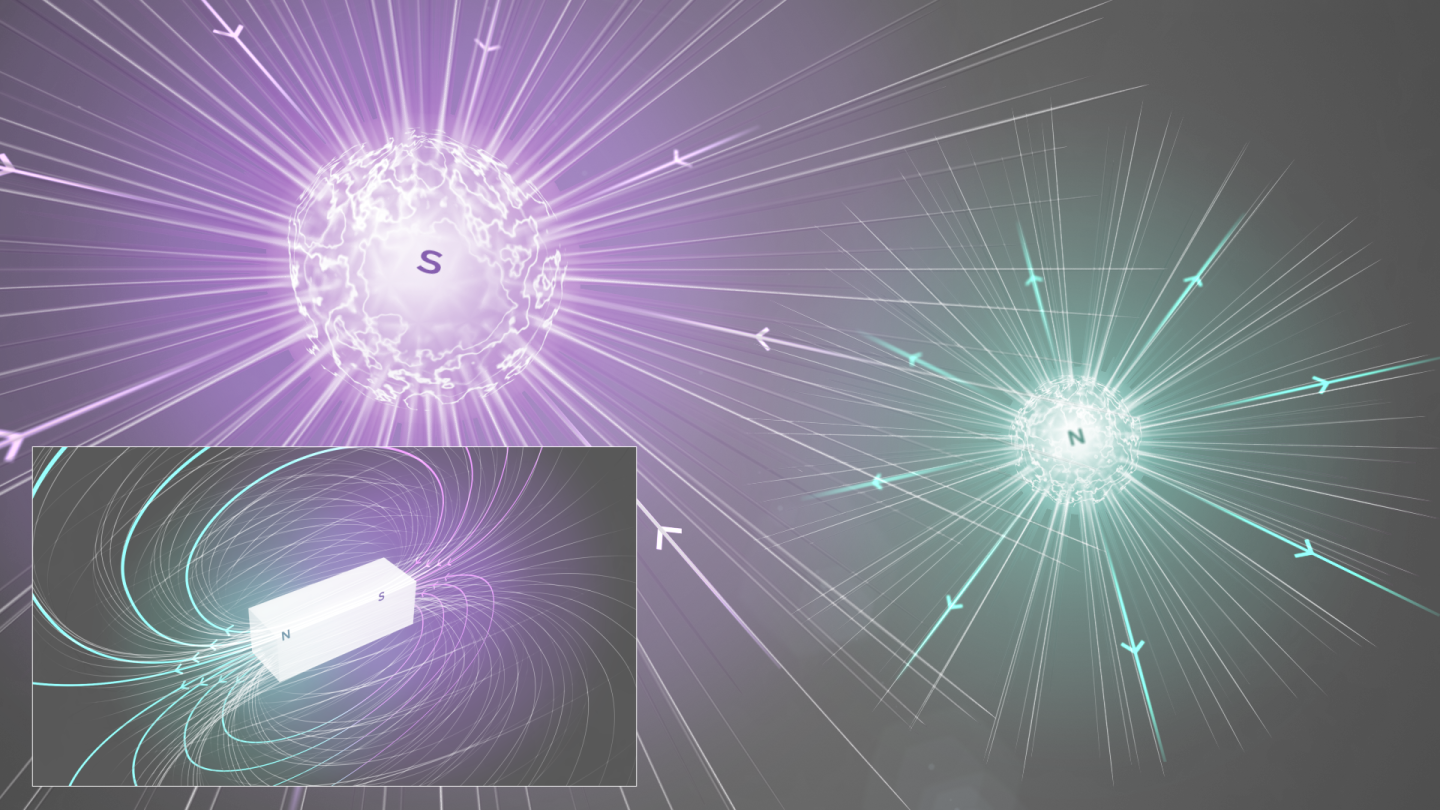Magnets, those everyday objects we stick to our fridges, all share a unique characteristic: they always have both a north and a south pole. Even if you tried breaking a magnet in half, the poles would not separate – you would only get two smaller dipole magnets. But what if a particle could have a single pole with a magnetic charge? For over a century, physicists have been searching for such magnetic monopoles. A new study from the ATLAS collaboration at the Large Hadron Collider (LHC) places new limits on these hypothetical particles, adding new clues for the continuing search.
In 1931, physicist Paul Dirac proved that the existence of magnetic monopoles would be consistent with quantum mechanics and require — as has been observed — the quantisation of the electric charge. In the 1970s, magnetic monopoles were also predicted by new theories attempting to unify all the fundamental forces of nature, inspiring physicist Joseph Polchinski to claim that their existence was “one of the safest bets that one can make about physics not yet seen.” Magnetic monopoles might have been present in the early Universe but diluted to an unnoticeably tiny density during the early exponential expansion phase known as cosmic inflation.
Researchers at the ATLAS experiment are searching for pairs of point-like magnetic monopoles with masses of up to about 4 teraelectronvolts (TeV). These pairs could be produced in 13 TeV collisions between protons via two different mechanisms: “Drell-Yan”, in which a virtual photon produced in the collisions creates the magnetic monopoles, or “photon-fusion”, in which two virtual photons radiated by the protons interact to create the magnetic monopoles.
The collaboration’s detection strategy relies on Dirac’s theory, which says that the magnitude of the smallest magnetic charge (gD) is equivalent to 68.5 times the fundamental unit of electric charge, the charge of the electron (e). Consequently, a magnetic monopole of charge 1gD would ionise matter in a similar way as a high-electric-charge object (HECO). When a particle ionises the detector material, ATLAS records the energy deposited, which is proportional to the square of the particle’s charge. Hence, magnetic monopoles or HECOs would leave large energy deposits along their trajectories in the ATLAS detector. Since the ATLAS detector was designed to record low-charge and neutral particles, the characterisation of these high-energy deposits is vital to the search for monopoles and HECOs.
In their new study, the ATLAS researchers combed through the experiment’s full dataset from Run 2 of the LHC (2015–2018) in search of magnetic monopoles and HECOs. The search made use of the detector’s transition radiation tracker and the finely segmented liquid-argon electromagnetic calorimeter. The result places some of the tightest limits yet on the rate of production of magnetic monopoles.
The search targeted monopoles of magnetic charge 1gD and 2gD and HECOs of electric charge 20e, 40e, 60e, 80e and 100e, with masses between 0.2 TeV and 4 TeV. Compared to the previous ATLAS search, the new result benefited from the larger, complete Run-2 dataset. This was also the first ATLAS analysis to consider the photon-fusion production mechanism.
With no evidence of either magnetic monopoles or HECOs in the dataset, the ATLAS researchers established new limits on the production rate and mass of monopoles with a magnetic charge of 1gD and 2gD. ATLAS remains the experiment with the greatest sensitivity to monopoles in this charge range; the smaller LHC experiment MoEDAL-MAPP has previously studied a larger charge range and has also searched for monopoles with a finite size.
ATLAS physicists will continue their quest to find magnetic monopoles and HECOs, further refining their search techniques and developing new strategies to study both Run-2 and Run-3 data.
Find out more on the ATLAS website.

